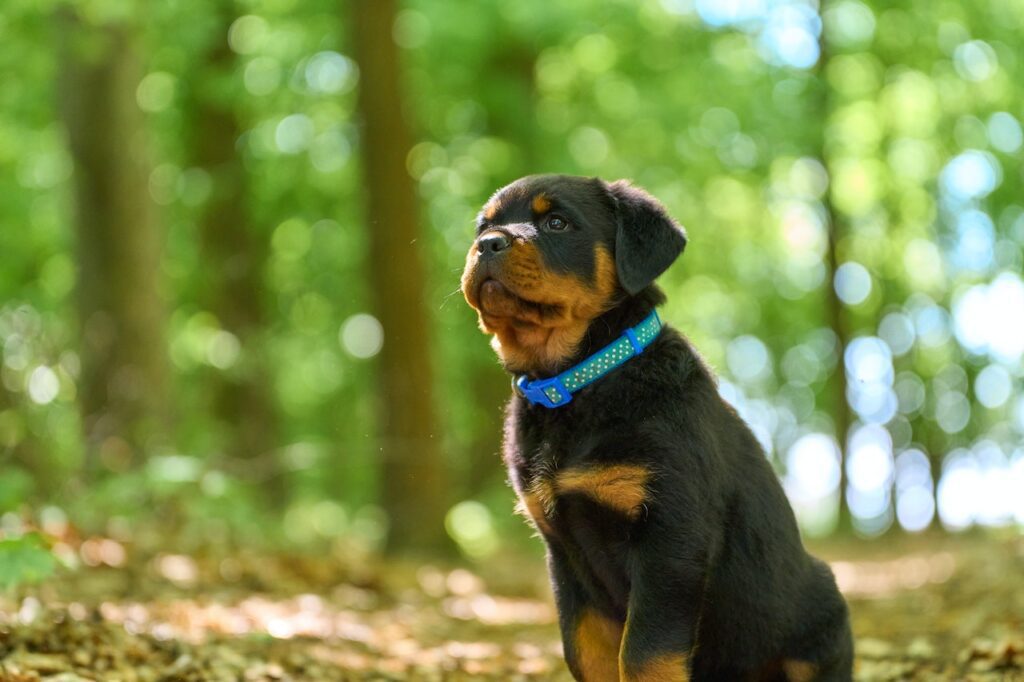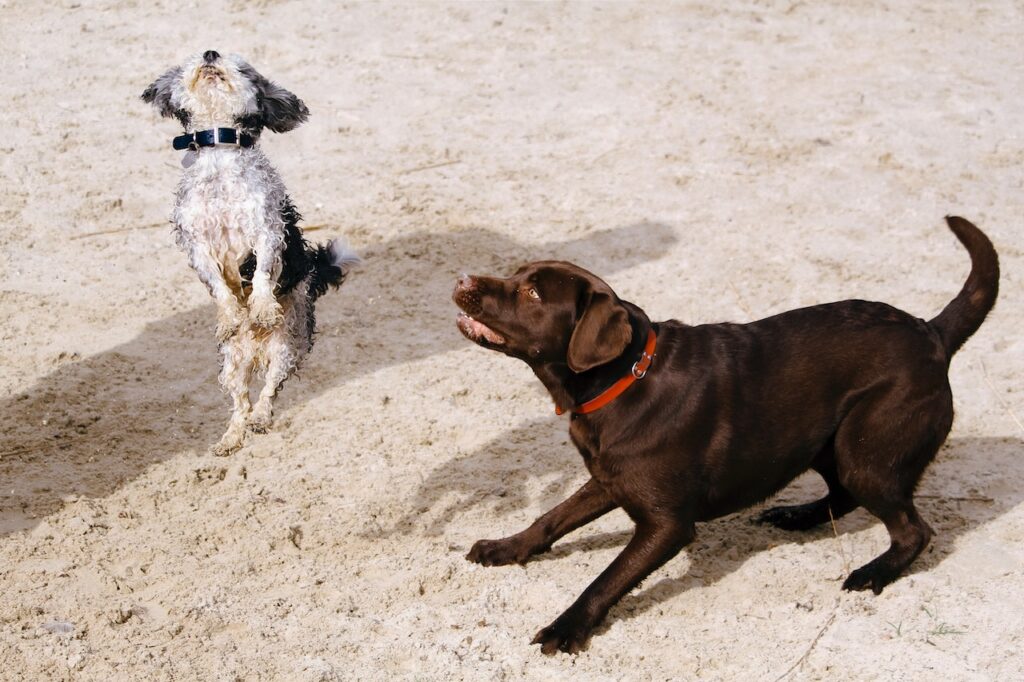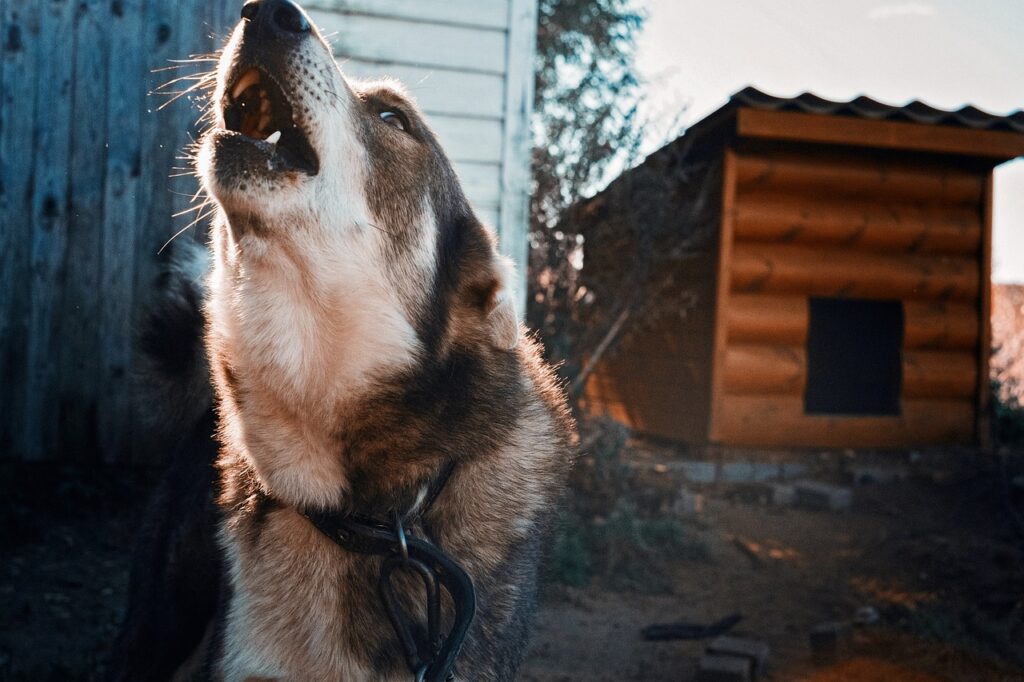You might have noticed your Rottweiler offering you a peculiar sound that seems to oscillate between a rumble and a growl when they are seemingly happy. It’s an idiosyncrasy that seems to baffle many a dog lover. Are they really growling in the terrifying sense of the word? What if I told you that this sound, which somewhat resembles growling, is often just another way for these gentle giants to express their joy and affection? Let’s unravel the mystery behind these joyous growls, so you can become fluent in the language of Rottweilers.
Rottweilers: The Vocal Communicators
Understanding Their Unique Language
Rottweilers are known for their deep and varied vocalizations. Isn’t it fascinating that these sounds can range from joyful growls to affectionate whines?
- A Tapestry of Sounds: These magnificent creatures have a rich repertoire of sounds that convey different emotions, making their communication quite nuanced.
- The Infamous ‘Rottie Rumble’: This term is affectionately used by Rottweiler enthusiasts to describe the sound that seems like a growl but is often a sign of contentment.
Have you ever caught yourself smiling when you heard that delightful ‘Rottie Rumble’?
Distinguishing Between Growls
To understand what their vocalizations truly mean, we have to put on our detective hats and look for clues in their body language.
- Playful Posture: If their body is relaxed, with a wagging tail and playful eyes, the growl is likely one of joy.
- Tense Stance: On the other hand, a tense body accompanied by a growl may be a sign of distress or discomfort.
Isn’t it like learning a new language, where every sound and gesture carries a unique message?
The Roots of the Growling Behavior
We often seek the roots of behavior deep within the ancestry of a breed. Could this growling habit be a relic of their past as working dogs?
Historical Background
- Guardian Roots: Historically, Rottweilers were used as herding and guarding dogs, and this background might contribute to their expressive vocalizations.
- Social Creatures: Being social animals, they developed a complex system of communication to work efficiently in groups.
Could their history be whispering through their contemporary behaviors, narrating tales of teamwork and camaraderie?
Physiological Aspects Behind The Growls
It’s not just their history; their physiology too plays a pivotal role in their vocalizations. But what exactly happens physiologically when a Rottweiler growls in happiness?
Physical Attributes
- Deep Chest: Rottweilers have a deep chest, which might contribute to the depth and resonance of their vocalizations.
- Flexible Vocal Cords: Their vocal cords can create a range of sounds, allowing them to communicate complex emotions through vocalizations.
Doesn’t it sound like a well-tuned musical instrument, capable of playing a symphony of emotions?
Growling as a Form of Bonding
This unique form of vocalization isn’t just a personal quirk; it serves to strengthen bonds and foster companionship.
Strengthening Bonds
- A Sign of Affection: Often, a happy growl is a sign of affection, showcasing their love and trust in you.
- Shared Moments: These vocalizations can become shared moments of joy, where your Rottweiler expresses their happiness vocally.
Wouldn’t you agree that these sounds turn into sweet serenades over time, echoing the love and understanding between you and your furry friend?
Training and Socialization Impact on Growling
Training and socialization also play a substantial role in shaping a Rottweiler’s vocal behavior. How can we guide them to express themselves in a way that fosters harmony and understanding?
Impact of Training
- Early Socialization: Early socialization can help them learn to modulate their vocalizations, understanding when to growl and when to remain silent.
- Positive Reinforcement: Encouraging them gently when they communicate appropriately can foster a positive communication environment.
Don’t we, as pet parents, have a role to play in sculpting the melodious communication symphony?
Understanding and Responding to Growls
Understanding is a two-way street. As much as we try to understand them, it is essential that our responses align with their emotional states.
Responding Wisely
- Observing Body Language: Always accompany the sound with an analysis of their body language to understand their true emotions.
- Responding Calmly: If the growl is one of happiness, respond with affection and positive reinforcement, fostering a joyful interaction.
Isn’t it akin to a beautiful dialogue, where both parties understand and appreciate each other’s perspectives?
Addressing Concerns Around Growling
Despite the joyous undertones, sometimes, these growls can become a cause of concern. How can we address these issues effectively?
Possible Concerns
- Misunderstandings: Sometimes, people unfamiliar with the breed might misunderstand their happy growls as signs of aggression.
- Seeking Expert Advice: If you’re unsure about the nature of the growl, don’t hesitate to consult a professional to understand your Rottweiler better.
Can we consider these growls as an invitation to delve deeper into their rich emotional world?
Conclusion: Embracing the Joyous Growls
As we wrap up our exploratory journey, we find ourselves not just with information but with a newfound appreciation for the rich tapestry of vocalizations that Rottweilers bring into our lives.
An Affectionate Symphony
- Rich Vocalizations: These beautiful creatures communicate with a rich palette of sounds, adding vibrant hues to our daily interactions.
- A Mark of Trust: The joyous growls stand as a testament to their trust and affection towards us, making our bonds stronger and more affectionate.
Key Takeaway
Understanding the joyful growls of Rottweilers allows us to foster a deeper connection, nurturing a bond that is both loving and understanding. It’s akin to mastering a new language, a language that sings songs of joy, love, and deep bonding. So, the next time your Rottweiler offers you a happy growl, respond with a loving gesture, appreciating this unique and affectionate method of communication, won’t you?
What do you think? Ready to embrace the vibrant and expressive world of Rottweilers with a wider smile and an open heart?



